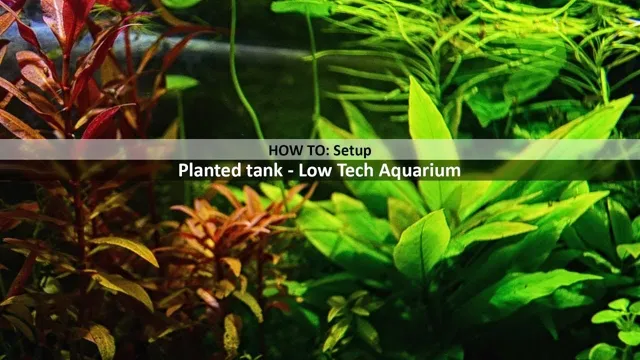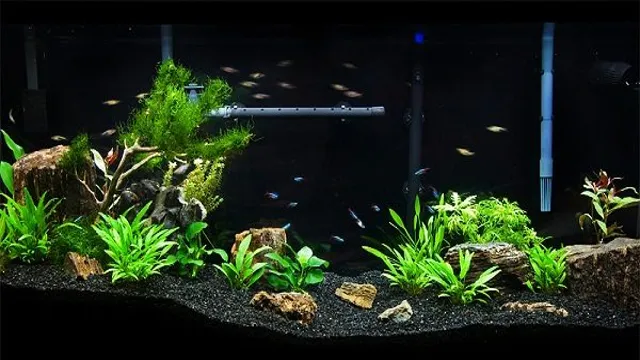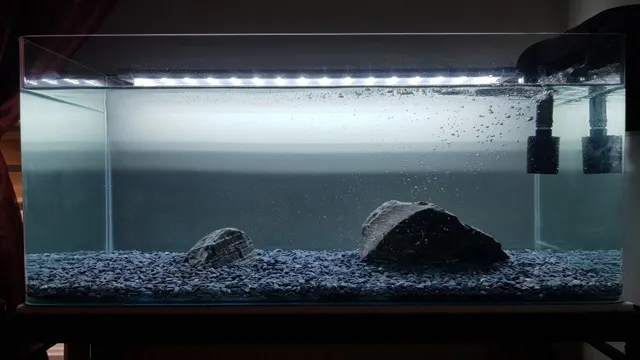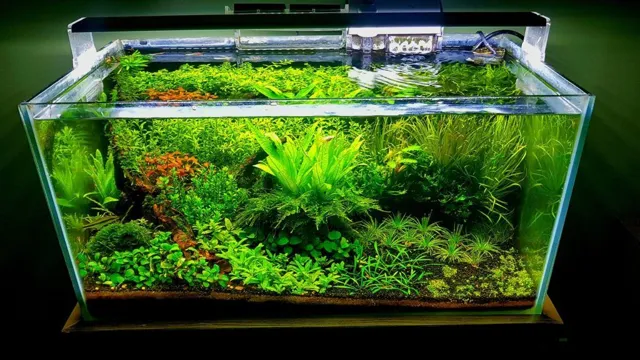Are you new to planting aquariums but unsure where to start? You don’t need high-tech gadgets to create a beautiful underwater landscape for your aquatic pets. In fact, a low-tech planted aquarium can be a great choice for beginners looking to dip their toes into this hobby. With a few simple tips, you can create a thriving ecosystem that’s both budget-friendly and easy to maintain.
Think of it like a garden – you don’t need all the fancy tools to cultivate a stunning outdoor space. All you need is a little know-how and a willingness to learn. Let’s dive into the world of low-tech planted aquariums and explore the possibilities together.
What is a low tech aquarium?
If you’re interested in creating a beautiful aquarium but don’t want to spend a ton of money on high-tech equipment, a low tech aquarium might be the solution you’re looking for. A low tech aquarium is a type of aquarium that doesn’t require complex equipment, high-powered lights, or CO2 injectors to grow plants and keep fish healthy. Instead, it relies on natural processes, such as the nitrogen cycle, to maintain a healthy ecosystem.
To make a low tech planted aquarium, you’ll need to select plants that don’t require high light levels or CO2 injection. You’ll also want to avoid overstocking your tank to prevent excess waste buildup. By following these simple steps, you can create a beautiful low tech aquarium that is easy to maintain, cost-effective, and eco-friendly.
Definition and benefits
A low tech aquarium refers to an aquarium setup that doesn’t rely on complex technology to maintain a stable environment for aquatic organisms. This type of aquarium typically utilizes natural filtration methods that work with the ecosystem inside the tank, such as live plants, substrate, and beneficial bacteria. The benefit of a low tech aquarium is that it is a more cost-effective and sustainable solution for aquarium enthusiasts.
It also requires less maintenance than a high tech aquarium, as there are fewer pieces of equipment that need to be constantly monitored. Additionally, many hobbyists find that the naturalistic look and feel of a low tech aquarium creates a more serene and calming atmosphere in their home or office. Overall, a low tech aquarium can provide a wonderful opportunity to immerse oneself in the beauty of the underwater world without a lot of hassle or expense.

Setting up your low tech planted aquarium
If you’re looking to set up a low tech planted aquarium, it’s important to start with a good foundation. First, choose a suitable aquarium with enough space for your plants and fish. Next, choose the right substrate – a layer of gravel or sand mixed with plant-specific substrate will work well.
Then introduce your plants, making sure to select those suitable for low-tech setups, such as anubias, Java fern, and mosses. Light is also important, with natural sunlight or low-intensity LED lights being great for low-tech setups. Make sure to introduce your fish gradually, and avoid overcrowding – this can lead to poor water quality and plant health.
With a little research and patience, a low tech planted aquarium can become a beautiful and low-maintenance addition to your home.
Choosing the right tank and substrate
When setting up a low tech planted aquarium, it’s important to choose the right tank and substrate. The tank should be large enough to accommodate the plants and fish you plan to keep, with a minimum size of 10-20 gallons. It’s also important to consider the shape of the tank, as taller tanks provide more vertical space for taller plants, while longer tanks are better suited for carpeting plants.
When it comes to substrate, there are a few options to choose from. For low tech setups, a simple inert substrate like sand or gravel can work well. However, adding a nutrient-rich substrate like soil or clay can provide added benefits to your plants.
These substrates provide a source of nutrients for the plants, allowing them to grow faster and healthier. Be sure to do your research and choose a substrate that suits the needs of your plants and fish. Overall, choosing the right tank and substrate can have a big impact on the success of your low tech planted aquarium. (See Also: How to Boil Aquarium Gravel: Easy Steps for a Safer Fish Tank)
By selecting a suitable size and shape tank and a nutrient-rich substrate, you’ll be well on your way to a thriving aquatic ecosystem.
Selecting the right plants for your setup
When it comes to setting up your low tech planted aquarium, selecting the right plants is crucial for success. You’ll want to choose plants that are easy to care for and adaptable to different water conditions. Some great options include Java Fern, Anubias, and Cryptocoryne, as they all require little maintenance and can thrive in a variety of setups.
Another essential factor to consider is lighting. Generally, low tech setups require less light than high tech ones, so be sure to choose plants that can thrive in lower light conditions. Lastly, it’s essential to research the specific needs of your chosen plants to ensure they’re compatible with your setup and other inhabitants, such as fish and invertebrates.
With the right plant choices, your low tech planted aquarium can be a visually stunning and rewarding addition to your home or office.
The importance of lighting and filtration
Setting up a low tech planted aquarium can be an enjoyable and relaxing hobby, but it requires careful attention to two important elements – lighting and filtration. Adequate lighting is essential to help your plants grow and thrive, and it is important to choose the right type of light for your aquarium. LED lights are a great option as they provide the necessary spectrum of light for plants, are energy-efficient, and long-lasting.
When it comes to filtration, choosing the right type and size of filter is crucial. Your filter should not only keep the water clean but also provide sufficient water flow to ensure proper oxygenation and circulation throughout the aquarium. A hang-on-back filter can be a good choice for a low tech planted aquarium, as it is easy to install and maintain, and provides effective filtration without creating too much water current.
By paying attention to these two key elements, you can create a beautiful and healthy environment for your aquatic plants to thrive in.
Maintaining your low tech planted aquarium
Maintaining a low tech planted aquarium is easier than you might think. A low tech planted tank typically consists of low maintenance plants, natural aquarium substrate, and a basic lighting system. To maintain it, water changes must be done regularly to keep the water clean, and the plants must be trimmed periodically to prevent overgrowth.
Another important aspect is to monitor the pH and CO2 levels to ensure that they are within the correct range for your plants to thrive. Feeding the aquarium with fish food will also provide the necessary nutrients for the plants to grow. It is essential to avoid overfeeding, as this will lead to excess nutrients that will cause algae to grow and compete with the plants for resources.
Lastly, keeping the aquarium well-lit by replacing the bulbs every six months will ensure the plants receive enough light to photosynthesize. With proper care, a low tech planted aquarium can be a beautiful addition to any home or office.
Understanding water parameters and testing
Maintaining a low tech planted aquarium can be a fun and rewarding experience, but understanding water parameters and testing is important for the health and well-being of your aquatic friends. Water parameters such as pH level, hardness, and ammonia levels can affect the growth and overall health of your plants and fish. Testing your water regularly with a reliable test kit is essential to ensure proper levels are maintained.
Adding a fertilizer and CO2 supplement can also be beneficial for plant growth. Keep in mind that plants and fish can have different preferences for water parameters, so research and adjust accordingly. By staying on top of your water parameters and making necessary adjustments, you can maintain a thriving low tech planted aquarium for years to come. (See Also: How to Clean Aquarium Plants of Snails: A Complete Guide to a Snail-Free Tank.)
Tips for proper pruning and algae control
Maintaining your low tech planted aquarium can be a breeze with some proper pruning and algae control. Pruning is an essential part of keeping your plants healthy and looking beautiful. Regularly trimming off any dead or dying leaves will encourage new growth, and pruning back fast-growing plants will help prevent them from taking over your aquarium.
It’s essential to use sharp, clean scissors or pruning shears to avoid damaging healthy plant tissue. When pruning, make sure to keep the overall shape of the plant intact. Algae growth can be a common problem in planted aquariums, but it can be controlled.
Reducing the amount of light your aquarium gets can help reduce algae growth. You can also add algae-eating fish or snails to help clean up any excess algae. It’s important to avoid overfeeding your fish, as this can contribute to excess nutrients in the water and promote algae growth.
By taking these simple steps, you can keep your low tech planted aquarium healthy, vibrant, and algae-free.
Low tech aquariums vs high tech aquariums
If you’re looking to set up an aquarium with live plants, you may be wondering whether you should go for a low tech or high tech setup. A low tech aquarium is a great option for those who want a lower-maintenance tank. These setups typically involve using low light plants and not adding CO
Instead, the plants rely on natural filtration systems and slow growth rates, which can be aided by a substrate or fertilizers. On the other hand, high tech aquariums require some extra investment in terms of equipment and maintenance. These setups involve using intense lighting, CO2 systems, and regular fertilization to support high growth rates and intense colors in the plants.
While a high tech tank can be stunning, it requires more time and effort to maintain. Ultimately, it depends on your preferences and ability to commit time and energy to your aquarium. If you’re new to owning an aquarium, a low tech setup may be a good starting point.
With patience and care, a low tech planted aquarium can be a beautiful feature in any room.
Comparing the two setups and their pros and cons
Low tech aquariums versus high tech aquariums can be quite different setups, each with their own advantages and disadvantages. Low tech aquariums generally have less equipment, require less maintenance, and can be less expensive to set up. On the other hand, high tech aquariums typically have more advanced equipment, more precise control over water parameters, and can often yield better results in terms of plant growth and overall aesthetics.
However, high tech setups can also be more prone to equipment malfunctions and require more upkeep. The decision ultimately depends on the individual’s goals and level of experience, as both types of aquariums can provide a beautiful and thriving aquatic ecosystem.
Conclusion
In conclusion, making a low tech planted aquarium may seem like a daunting task, but with a little creativity, patience, and determination, you can create a beautiful aquatic ecosystem. Whether you’re a beginner or a seasoned hobbyist, there are plenty of simple and effective ways to establish a thriving planted aquarium without breaking the bank. From choosing the right plants and substrates to providing adequate lighting and filtration, the key is to start small and build your way up. (See Also: How to Keep Roku Aquarium Screensaver On for Longer: Quick & Easy Tips)
So go ahead and unleash your inner aquarist – who knows, you may just end up with a stunning underwater paradise that will be the envy of all your friends!”
FAQs
What types of low-tech plants can I use in a planted aquarium?
Some common low-tech plants for a planted aquarium include Java Fern, Anubias, Cryptocoryne, and Java Moss.
Do I need special lighting for a low-tech planted aquarium?
No, low-tech plants do not require intense lighting. A regular LED light or fluorescent light will suffice.
How often should I change the water in my low-tech planted aquarium?
It is recommended to change about 20% of the water every two weeks.
Can I use gravel as a substrate in my low-tech planted aquarium?
Yes, gravel can be used as a substrate but a finer-grained substrate like sand or soil is better for plant growth.
Should I add fertilizer to my low-tech planted aquarium?
Yes, adding a liquid fertilizer to your aquarium once a month can help provide essential nutrients for plant growth.
How do I prevent algae growth in my low-tech planted aquarium?
Limiting the amount of light your aquarium receives and maintaining proper water conditions can help prevent algae growth.
Can I use CO2 injection in my low-tech planted aquarium?
While not necessary, adding CO2 injection can greatly enhance plant growth in a low-tech planted aquarium.







